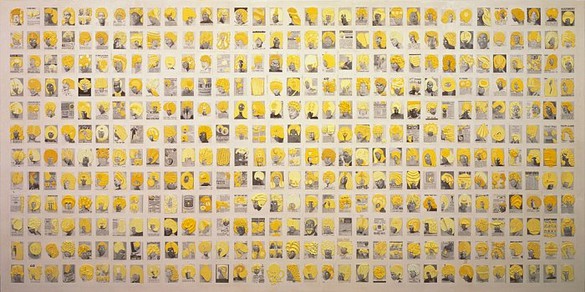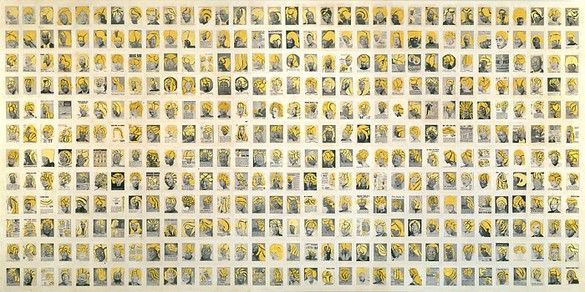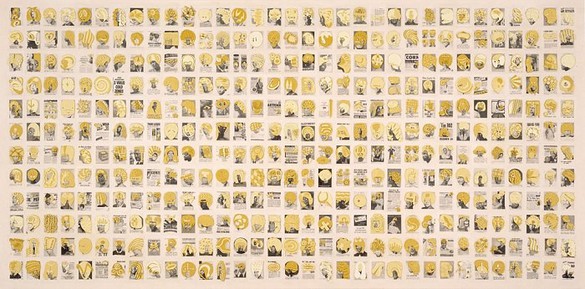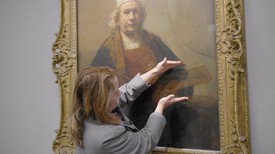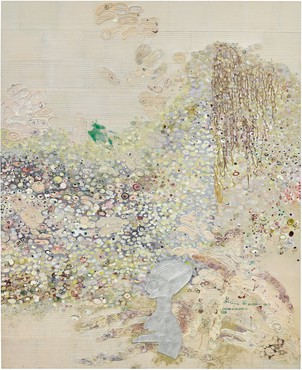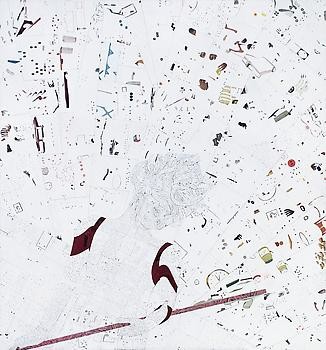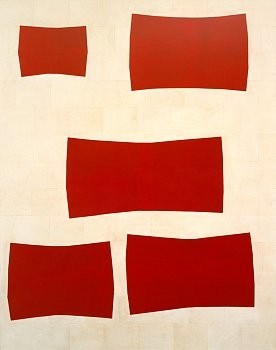About
Gagosian Gallery is pleased to announce an exhibition of new paintings, works on paper and films by Ellen Gallagher.
This much anticipated body of work includes "Afrylic" and "eXelento," both from 2004, which are the fourth and fifth paintings in a new series that began in 2001 with "Falls and Flips," and includes "Double Natural" (2002) and "Pomp Bang" (2003). Once completed, this series will consist of eight contingent panels. To begin each painting, Gallagher composes a grid from 396 individual portraits appropriated from archival materials she collects from mid-century black journals. Working from left to right Gallagher makes incisions in the portraits and builds a plasticine prosthetic or wig onto each character. This dual operation between the archival and the whimsical creates a blind spot, a gap in legibility, which helps to activate a degree of temporal disturbance. Such disturbance works through the chronological involution that combines history with speculation. This in turn proposes that mutability has been here all along and that we are its conscripts.
This series of interwoven paintings, drawings, and 16mm animations seeks to chart a poetic myth of the black oblique. Such a map emerges as cartography inscribed into the surfaces of the "Watery Ecstatic" drawings, etched into the "Murmur" films and pictured in the recurring characters Gallagher has culled from publications such as "Ebony," "Our World" and "Sepia". These mythologies imagine an African ontology characterized not by essence, but by the concept of mutation.
Share
Artist
Download
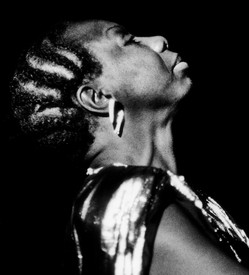
Nina Simone, Our National Treasure
Text by Salamishah Tillet.
Visions of the Self: Jenny Saville on Rembrandt
Jenny Saville reveals the process behind her new self-portrait, painted in response to Rembrandt’s masterpiece Self-Portrait with Two Circles.
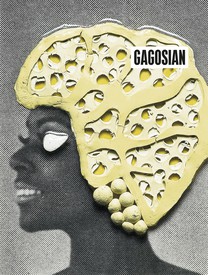
Now available
Gagosian Quarterly Summer 2019
The Summer 2019 issue of Gagosian Quarterly is now available, featuring a detail from Afrylic by Ellen Gallagher on its cover.

Now available
Gagosian Quarterly Spring 2019
The Spring 2019 issue of Gagosian Quarterly is now available, featuring Red Pot with Lute Player #2 by Jonas Wood on its cover.

Below the Surface
Ellen Gallagher in conversation with Adrienne Edwards.
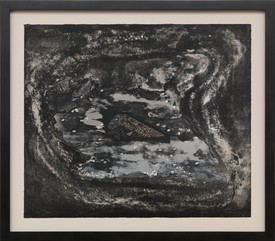
Alone on the Infinite Sea: Ellen Gallagher’s Lips Sink
Philip Hoare, author of The Whale and The Sea Inside, creates a narrative about Ellen Gallagher’s newest lithograph, Lips Sink.

